Subfamilia: LAMIINAE / Tribus: DORCADIONINI
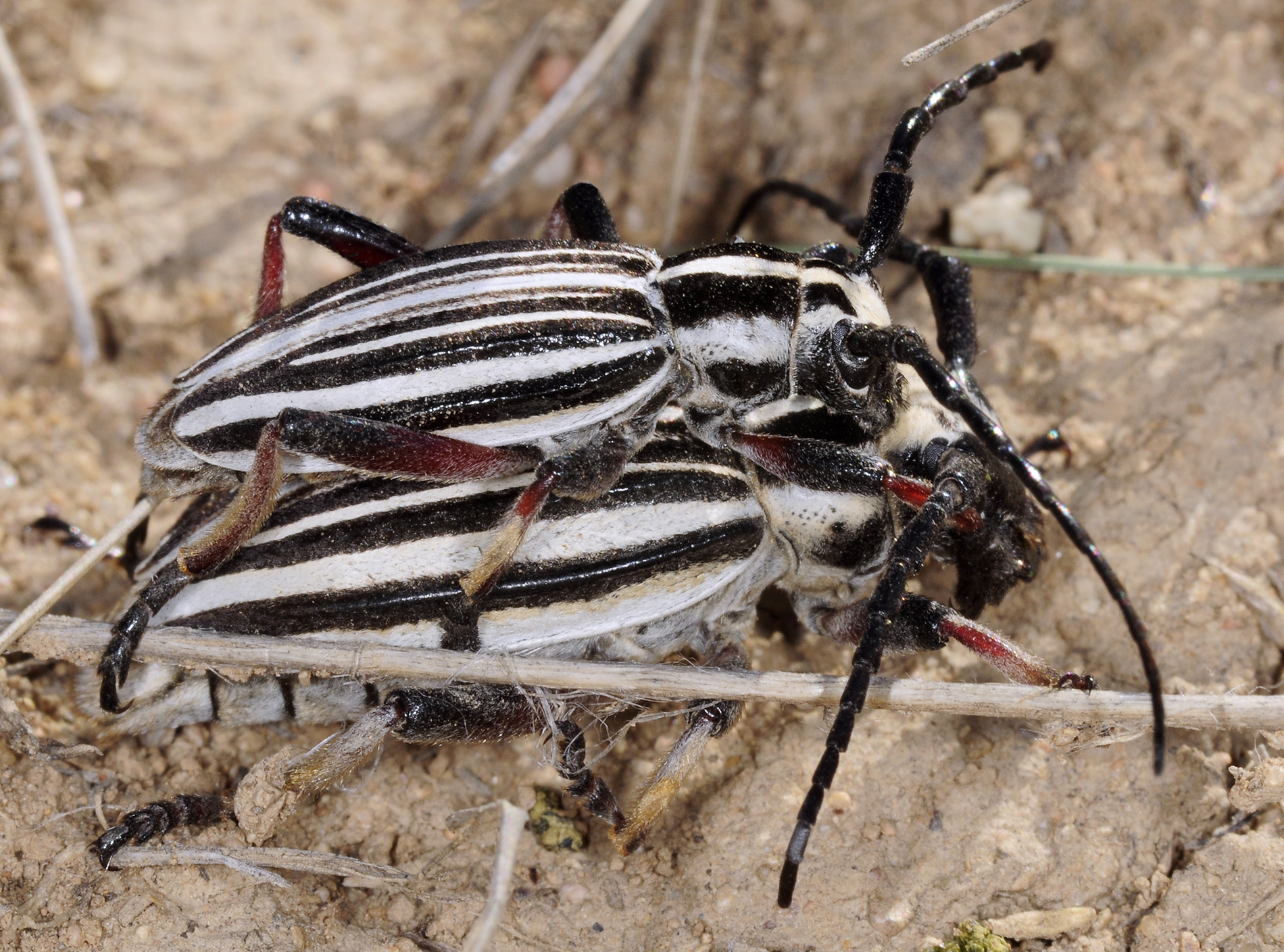
[Photo © Petr Jelínek]
Typical habitats of Dorcadion (Politodorcadion) archarlense, described by Mikhail Danilevsky in 1996 [✧], are areas with feather-grass (Stipa spp.) vegetation in clay semi-deserts in hilly plane between Karazhal and Arkharly Mts. in Betpak-Dala (Бетпақдала) desert (Central Kazakhstan). Larvae feed on roots of feather-grass (Stipa spp., Poaceae). Adults feed on above-ground parts of this plant species. Females and males usually hide inside or between Stipa clumps, where they are mating. Some beetles occasionally move from one clump to another and often have been attacked by lizards [❖].
Body length: ♂♂ 16 - 22 mm / ♀♀ 20 - 26 mm Life cycle: 1 year Adults in: last decade of April - second half of May Host plant: feather-grass (Stipa spp., Poaceae). Distribution: Central Kazakhstan
The depicted beetles were collected and photographed in Betpak Dala desert ca 20 km S of Karazhal (Қаражал) city in Kazakhstan on May 3, 2015.Collected by Petr Jelínek
[✧]
Danilevsky M.L.:
New taxa of the genus Dorcadion Dalman from Asia (Coleoptera, Cerambycidae).
Lambillionea 96 (2) 2: 407-420, 1996 [download]
[❖]
Toropov S.A., Milko D.A.:
Longhorns of the tribe Dorcadionini (Coleoptera, Cerambycidae) of Kazakhstan and Middle Asia.
SatEnto, Bishkek, 2013, pp. 103.
ISBN: 9967456167


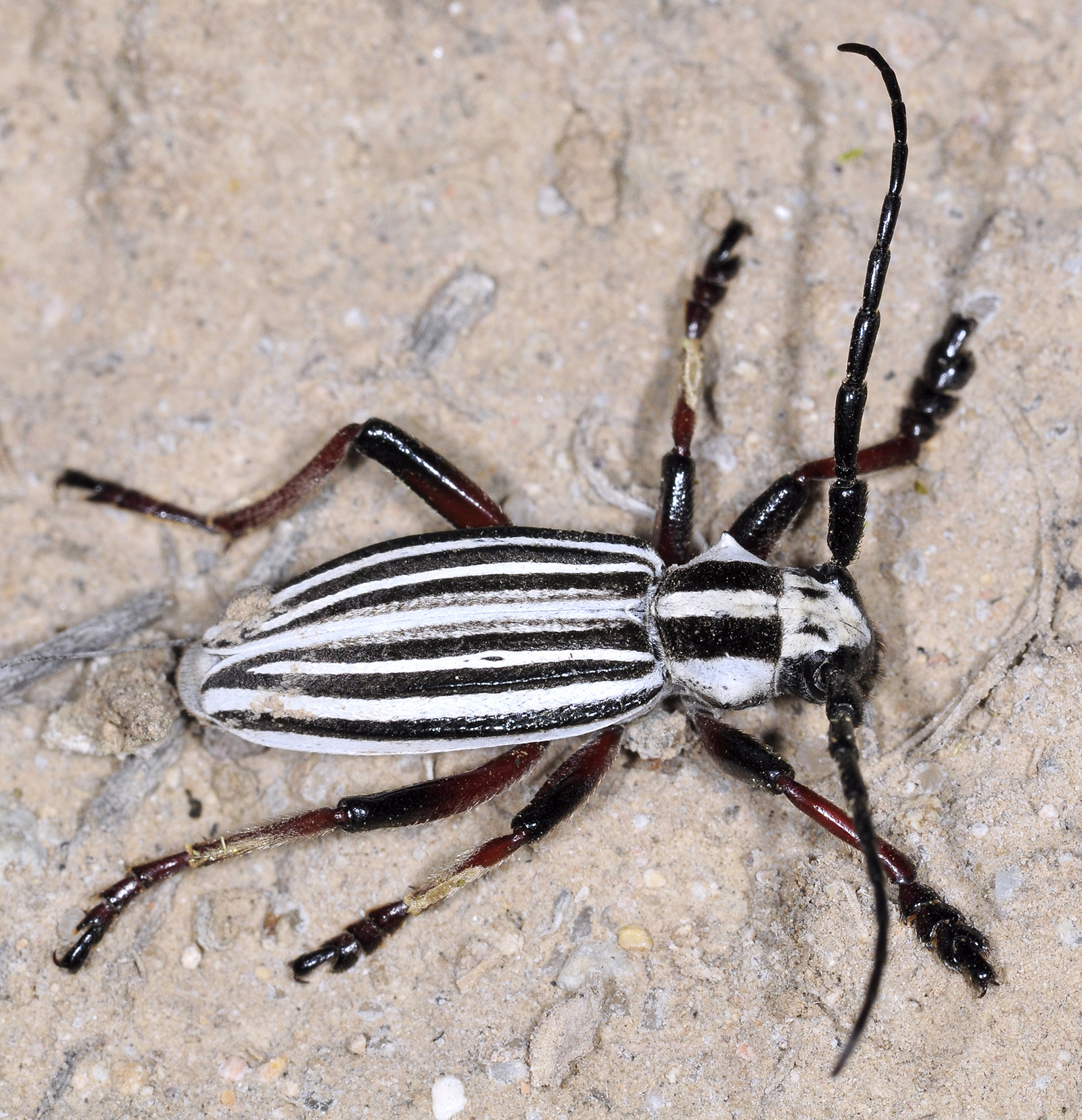

Dorcadion archarlense ♂♂ [Photo © Petr Jelínek]
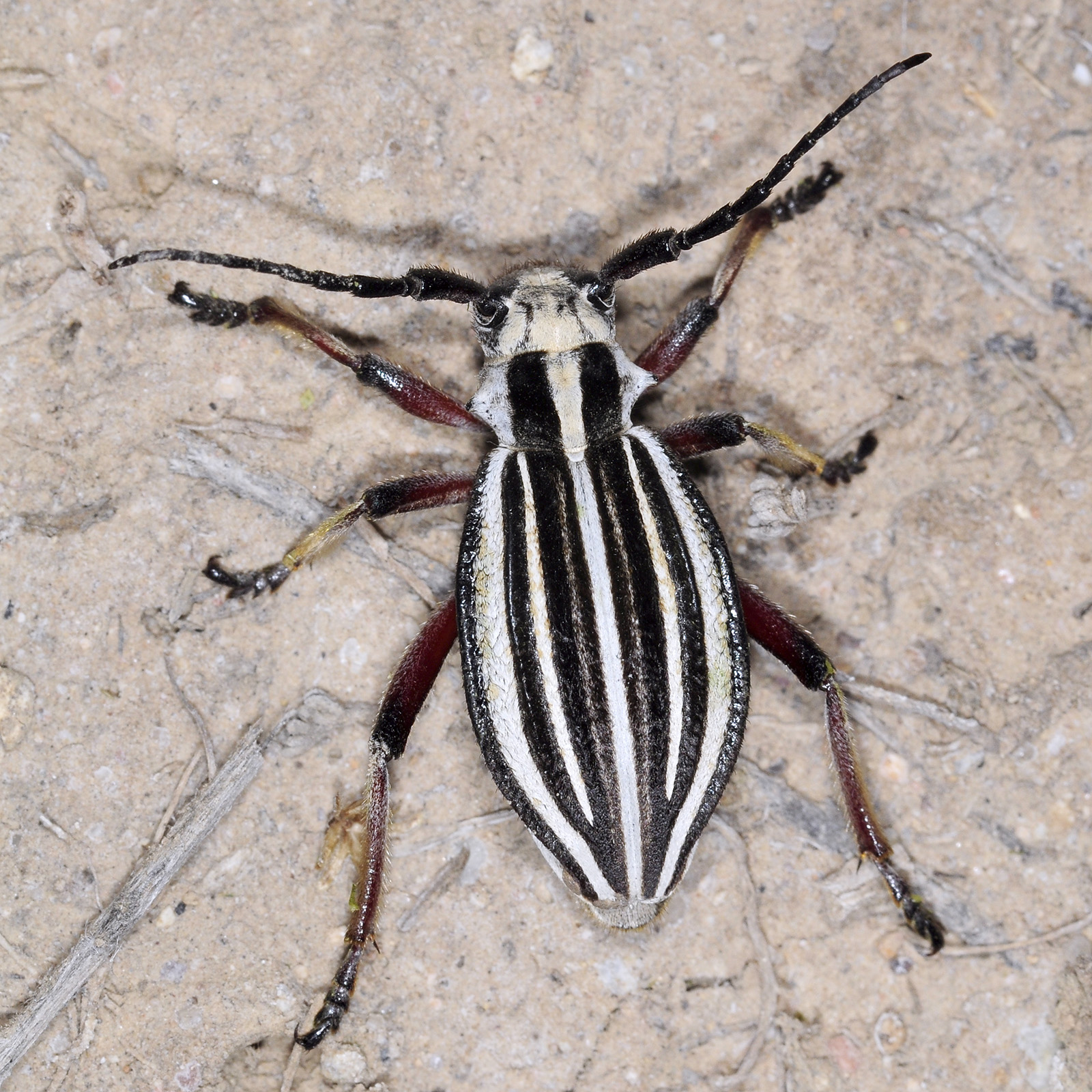
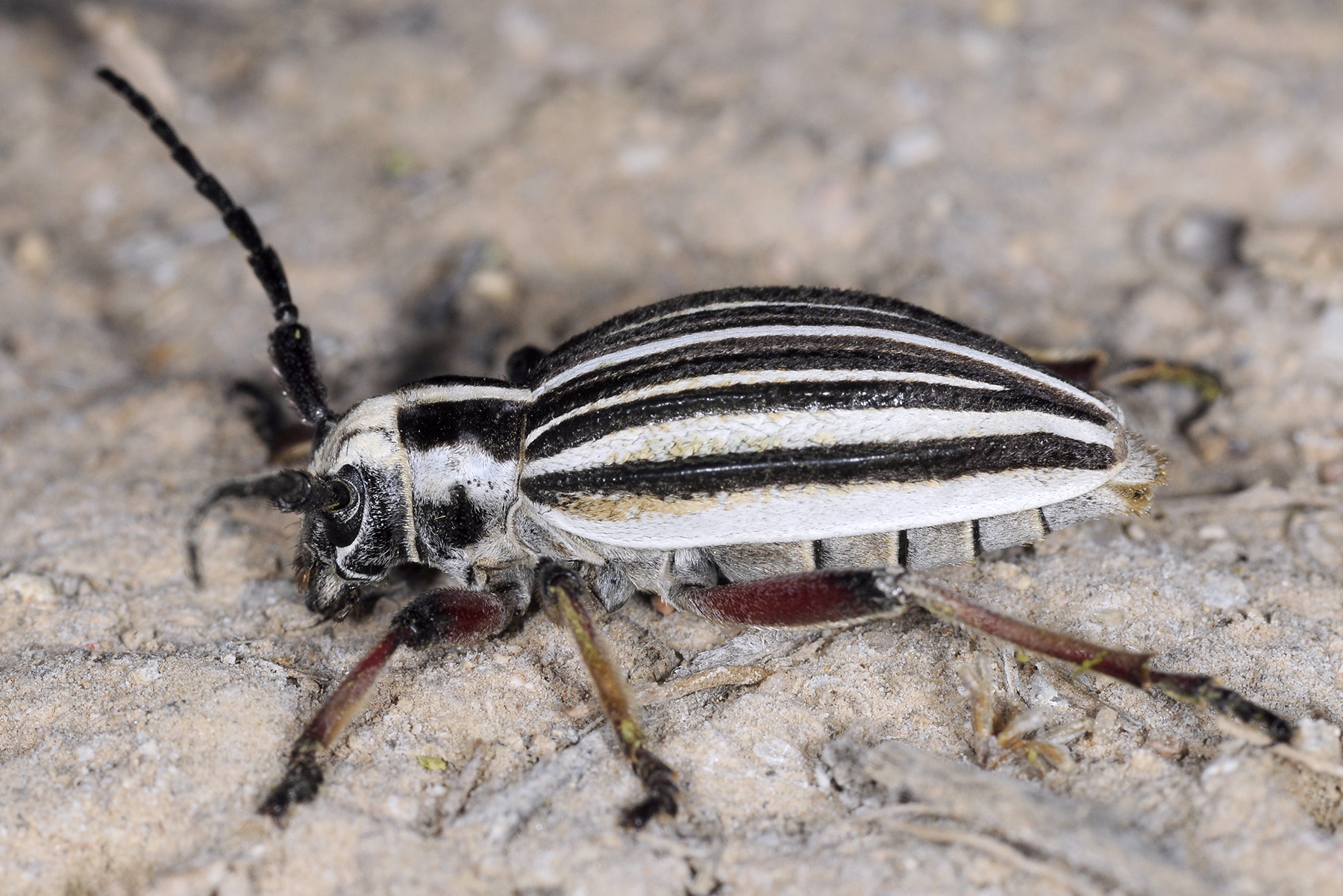

Dorcadion archarlense ♀♀ [Photo © Petr Jelínek]

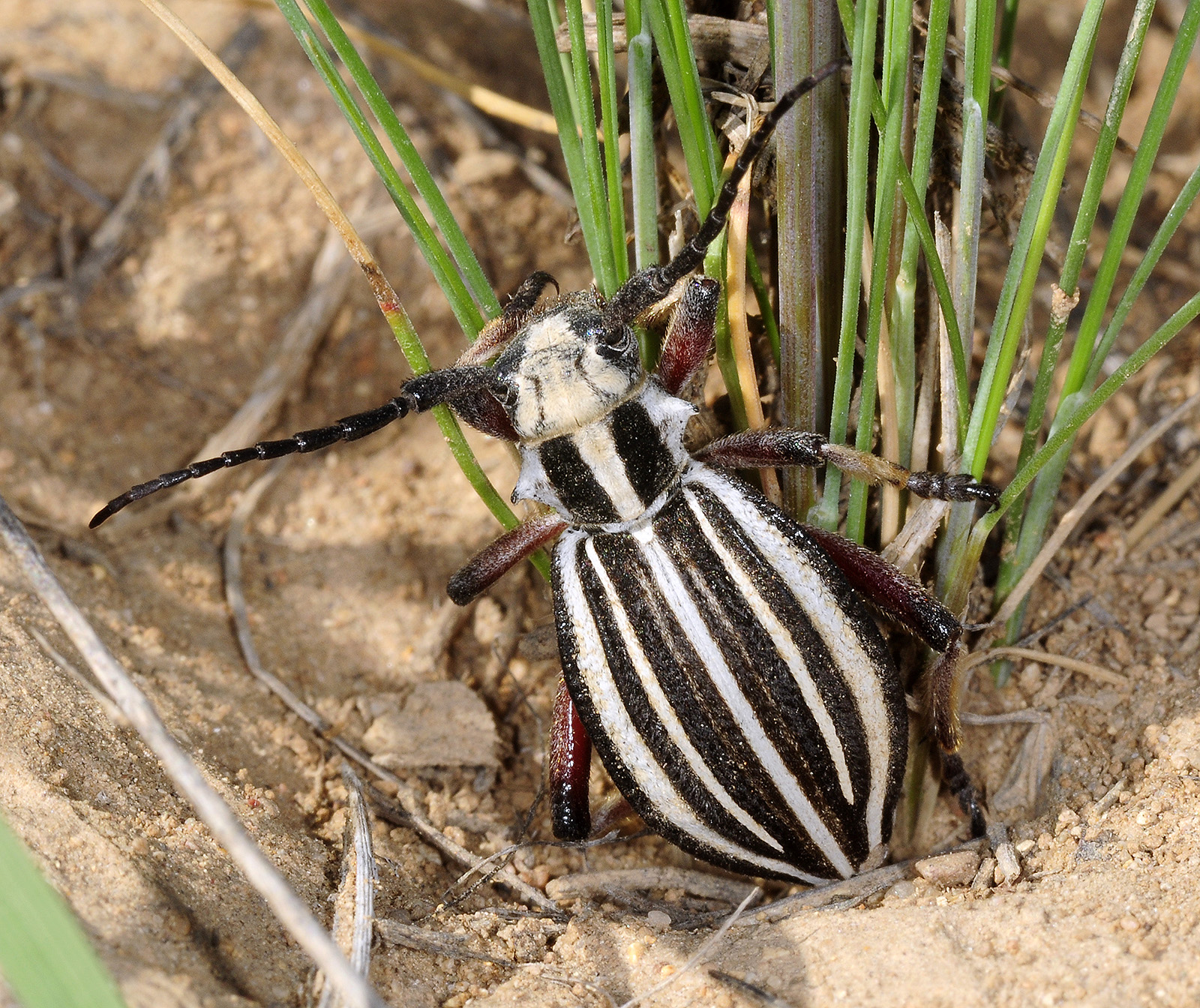
Ovipositioning ♀♀ of Dorcadion archarlense [Photo © Petr Jelínek]
| Subfamilia | Lamiinae Latreille, 1825 |
| Tribus | Dorcadionini Swainson, 1840 |
| Genus | Dorcadion Dalman, 1817 |
| Subgenus | Politodorcadion Danilevsky, 1996 |
| Species | Dorcadion (Politodorcadion) archarlense (Danilevsky, 1996) |
